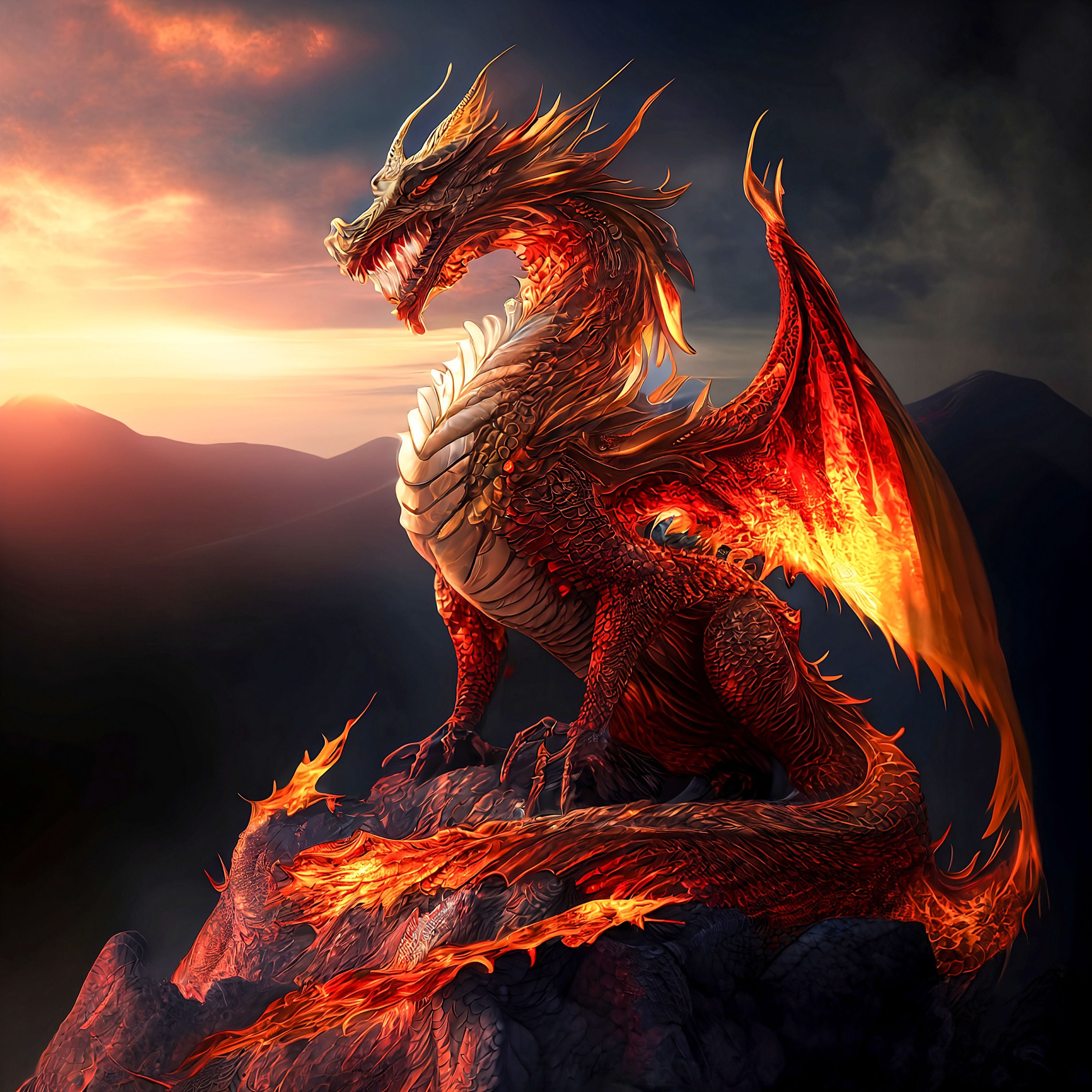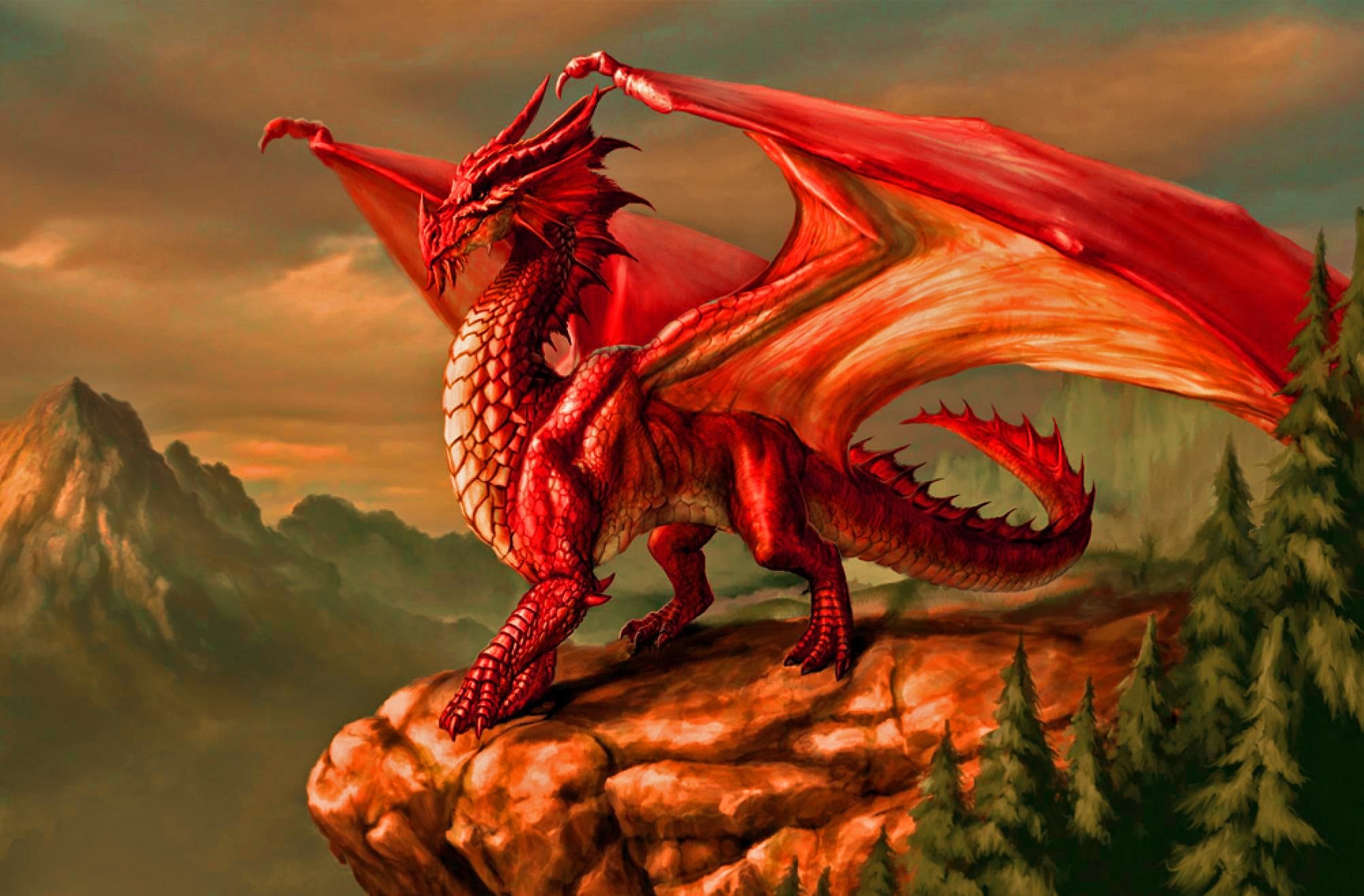Exploring Dragon Symbolism: What Ancient Creatures Tell Us About Our World
Have you ever stopped to think about what dragons truly mean? These incredible creatures, found in stories and old texts across many cultures, often spark a deep sense of wonder and, well, sometimes a little fear. From the powerful beasts of folklore to the more symbolic figures in sacred writings, dragons carry a lot of weight. What they stand for can be quite different depending on where you look, and it's actually pretty fascinating to peel back those layers.
Many folks, you know, are just naturally drawn to these grand beings. We see them everywhere, from epic tales to modern-day movies, and they almost always represent something big. Sometimes they're symbols of strength and wisdom, guarding treasures or ancient knowledge. Other times, they show up as figures of chaos, destruction, or something truly menacing.
But what about when we look at them in a very specific way, like in biblical texts? Here, the meaning takes on a different shade, a bit more pointed, you could say. We're going to take a closer look at what the dragon represents in these older writings, especially from "My text," and see how these ancient ideas still speak to us today. It's a rather interesting journey, don't you think?
Table of Contents
- The Dragon in Scripture: A Tale of Two Serpents
- Decoding Prophetic Imagery: Beyond the Dragon
- Satan's Influence: Ruler of This World
- Redemption's Glimmer: Jesus and the Tabernacle
- Frequently Asked Questions About Dragon Symbolism
The Dragon in Scripture: A Tale of Two Serpents
When we talk about what the dragon means in sacred writings, it's actually pretty important to know that there are a couple of distinct dragon-like figures mentioned. "My text" points out that we find two different dragons in the Bible, and each one carries its own special significance. This distinction is, you know, quite key to truly grasping the deeper messages these texts offer. It's not just one big, general dragon idea; there are specific roles and meanings for each.
Leviathan: The Ancient Beast
The very first one, this creature known as Leviathan, shows up in the older parts of the Bible, in the Old Testament. This isn't just any large sea creature; it's presented as something truly immense and powerful, a symbol of wild, untamed forces. Leviathan, you see, often stands for the chaos that God alone can control and ultimately defeat. It's a creature that defies human mastery, reminding us of a power far beyond our own. The descriptions of Leviathan are, well, quite vivid, painting a picture of something both majestic and formidable, a bit like nature's raw, unstoppable might. It's a powerful image, really, for understanding divine sovereignty over all creation, even the most formidable parts.
The Dragon of Revelation: Unveiling Satan
Then, there's the dragon we encounter in the book of Revelation. This one is, to be honest, a completely different sort of symbol. Here, "My text" makes it very clear: we are told that the dragon symbolizes Satan, that really old serpent. This isn't some mythical beast from ancient lore in the same way; this dragon is a direct representation of evil itself, the adversary. The next bit of the verse is just full of deep meanings, you know? The first couple of symbols are the dragon's seven heads and ten horns. These aren't just random details; they're packed with prophetic significance, often pointing to worldly powers or authorities that are, in a way, under this dragon's influence. This dragon, with its many heads and horns, is depicted as a formidable foe, constantly opposing what is good and right. It's a powerful visual, really, for the forces of darkness at play.
The book of Revelation describes a dramatic scene where the dragon and his own angels fought a battle. They just weren't strong enough, and as a result, there was no more room found for them up in heaven. And that really big dragon, the serpent of old, he was thrown right down. This event marks a pivotal moment, showing the defeat of this powerful, ancient adversary. It's a story of a great cosmic conflict, where even the mightiest evil is ultimately cast out. This particular dragon is, well, the ultimate symbol of rebellion against divine order, and its fall is a key part of the larger narrative.
Decoding Prophetic Imagery: Beyond the Dragon
The symbolic language in sacred texts, especially in books like Revelation, goes far beyond just the dragon. It's a rich tapestry of images, each carrying layers of meaning. Understanding these symbols helps us grasp the larger messages about, you know, what's coming and what's truly important. It's like a puzzle, where each piece, even something small, fits into a much bigger picture. "My text" helps us explore some of these other important symbols, showing how they all connect.
Revelation's Grand Narrative
You can really explore what those seven seals mean, or those seven trumpets, and the seven signs, and those seven bowls of Revelation. It's like a whole picture of Revelation is laid out for you. These aren't just random events; they are sequential unfoldings of divine judgment and revelation. For example, those four horsemen of the apocalypse, they're really made clear in the book of Revelation. You can figure out what those white, red, black, and ashen horses stand for. Each horse, you know, signifies a different aspect of judgment or historical unfolding, from conquest to famine and death. These symbols work together to paint a comprehensive picture of future events and spiritual realities. It's quite a detailed prophetic vision, really, offering glimpses into what's to come.
The Bronze Serpent: A Surprising Parallel
Now, here's a rather interesting symbol that might seem to contradict things at first glance: the bronze serpent that Moses crafted. "My text" helps us understand why that bronze serpent Moses crafted wasn't really breaking the rules of Exodus 20:4. It wasn't, like, a false god, you see. This serpent was made at God's command to provide healing for the people who had been bitten by venomous snakes. It wasn't an object of worship itself; rather, it was a point of focus for faith, a visible sign through which God's healing power flowed. You can truly understand what that bronze serpent was all about when you see it as a prefigurement, a pointer to something greater. It's a pretty powerful example of how a symbol can have different meanings depending on its context and purpose. This particular serpent, you know, actually points to a greater salvation, which is quite surprising given the usual symbolism of serpents.
The Final Kingdom: God's Rule
Speaking of prophecies, "My text" also touches on Daniel's vision of four great beasts, which represent successive earthly kingdoms. The very last kingdom, it's like a continuation of what Daniel saw in his vision. That last kingdom, it's actually God's own kingdom. This final kingdom is not one built by human hands or subject to human failings; it's eternal and divine. It's a pretty comforting thought, really, that despite all the struggles and worldly powers, there's a lasting, perfect rule. This kingdom is portrayed as one that will never be destroyed, standing in stark contrast to the temporary nature of human empires. It's a powerful vision of hope and ultimate divine sovereignty, showing that, you know, God has the final say in everything.
Satan's Influence: Ruler of This World
Returning to the dragon as a symbol for Satan, "My text" raises a really thought-provoking question: Is Satan actually running things here on Earth? He's called the ruler of this world, you see, in certain scriptures. This title points to a significant, though not ultimate, level of influence over human systems and spiritual darkness. There's this connection between the King of Tyre and Satan, like the real force behind the scenes. This suggests that Satan can operate through human leaders and earthly powers, subtly guiding them towards his own ends. What kind of power does Satan even have, then? It's not a power of creation, but rather one of deception, temptation, and opposition to divine will. His influence is, you know, often unseen, working through various means to sow discord and rebellion. It's a rather serious aspect of understanding the dragon's symbolism, highlighting the spiritual battles that are always happening around us.
Redemption's Glimmer: Jesus and the Tabernacle
Amidst all the discussions of dragons and spiritual conflict, "My text" also reminds us of a central theme: redemption. Every single piece of the tabernacle, and all its furnishings too, they actually pointed to and stood for our rescuer, Jesus Christ, and all the saving work he did. The tabernacle, a portable sanctuary in the Old Testament, was filled with symbols that foreshadowed Jesus's life, death, and resurrection. For example, the altar of sacrifice, the laver for washing, the lampstand providing light, and the very Holy of Holies where God's presence dwelled—all these elements, you know, had a deeper meaning connected to Christ. This shows that even in the midst of warnings about evil, there's always a message of hope and salvation. It's a beautiful way to see how ancient practices and objects actually reveal a timeless plan for human restoration. This connection is, you know, really quite profound, linking the old with the new in a very meaningful way.
For more insights into ancient biblical texts, you might find Bible Gateway to be a useful resource. You can learn more about biblical symbolism on our site, and link to this page understanding prophetic visions for further reading.
Frequently Asked Questions About Dragon Symbolism
Here are some common questions people often ask about what dragons represent, especially in sacred texts:
What does the dragon represent in Revelation?
In the book of Revelation, the dragon is a powerful symbol that actually stands for Satan, the ancient serpent. It's portrayed as a major adversary, leading a rebellion against heavenly powers and influencing earthly kingdoms. Its seven heads and ten horns are, you know, also highly symbolic, often pointing to worldly authority or dominion that is aligned with this evil force. It's a clear representation of spiritual opposition to divine plans.
Is the Leviathan a real dragon?
Leviathan, mentioned in the Old Testament, is typically understood as a symbolic creature rather than a literal dragon in the way we might imagine one today. It represents powerful, untamed forces, often associated with chaos and the depths of the sea. While it might be inspired by large, formidable sea creatures, its primary role in scripture is, well, symbolic of something only God can fully control and subdue. It's a bit like a poetic image of immense power.
Why is Satan called a dragon?
Satan is called a dragon in the book of Revelation to emphasize his destructive, deceptive, and formidable nature. The image of a dragon conveys immense power, ancient evil, and a fierce opposition to goodness. It also links him to the serpent from the Garden of Eden, highlighting his role as the original deceiver. This naming is, you know, meant to convey his true character and the scope of his influence, making it very clear who this spiritual adversary truly is.
So, as we've seen, the idea of the dragon, particularly in sacred writings, is far more than just a mythical creature. It carries profound meanings, from representing ancient chaos to embodying the very essence of spiritual opposition. Understanding these symbols helps us, you know, grasp deeper truths about spiritual battles, divine plans, and the ultimate triumph of good. It's a rather rich topic, really, with layers of significance that continue to resonate today. Exploring these symbols, you know, can really open up new ways of thinking about ancient texts and their messages for us now.

Dragon Digital Download Animal Decor Wall Art Dragon Print Animal

Blue dragon Commission by x-Celebril-x | Синий дракон, Мифические

Red Dragon Wallpapers (60+ images)